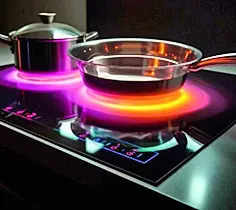
The top percentile of urban households can make using electrical appliances like induction cooktops, instead of gas, de rigueur. Electric cooking makes kitchens safer, and reduces the country’s dependence on gas imports. Cooking gas releases toxic pollutants, including NO2, CO and formaldehyde, not to mention toxic air pollutants in unburned gas that have been linked to cancer.
Electric cooking is yet to take off among Indians who can afford it. According to Indian Residential Energy Survey 2020, only about 5% household kitchens across India are ‘electric’, with a higher percentage in urban areas. 10.3% of households use electricity for cooking as a secondary source. Pushing for more energy-efficient appliance use in our cities and towns will also free up PNG for households that can’t yet afford the former, cleaner, less hassling option. By making electric cooking aspirational – ‘It’s a first world practice!’ – cooking appliance manufacturers can also innovate for more localised design (such as increasing the number of tops on electric induction cooktops) and lower prices. Using electric appliances and junking gas to cook must become the cool thing to do.









